4 Specific Item Schemes
- Contents
4.1 Introduction
The structures that are an arrangement of objects into hierarchies or lists based on characteristics, and which are maintained as a group inherit from ItemScheme. These concrete classes are:
- Codelist
- ConceptScheme
- CategoryScheme
- AgencyScheme, DataProviderScheme, DataConsumerScheme, OrganisationUnitScheme which all inherit from the abstract class OrganisationScheme
- Reporting Taxonomy
4.2 Inheritance View
The inheritance and relationship views are shown together in each of the diagrams in the specific sections below.
4.3 Codelist
4.3.1 Class Diagram
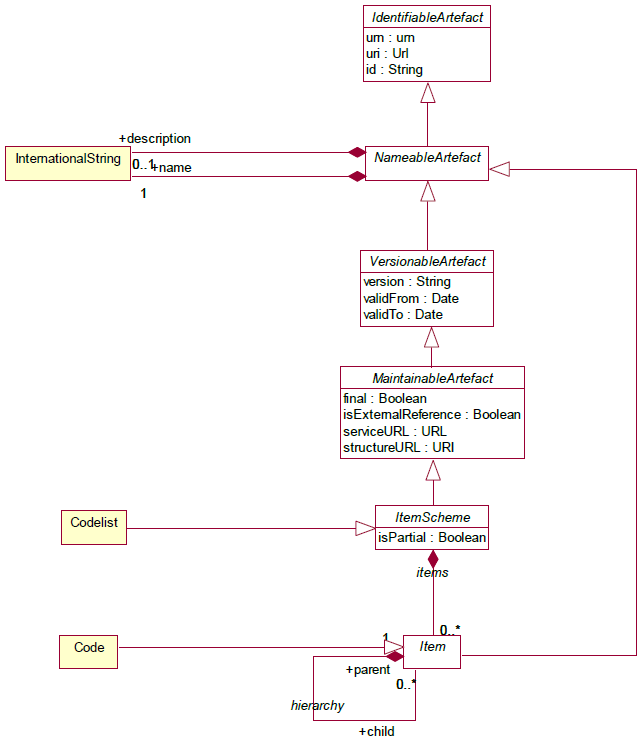
Figure 15 Class diagram of the Codelist
4.3.2 Explanation of the Diagram
4.3.2.1 Narrative
The Codelist inherits from the ItemScheme and therefore has the following attributes:
- id
- uri
- urn
- version
- validFrom
- validTo
- isExternalReference
- serviceURL
- structureURL
- final
- isPartial
The Code inherits from Item and has the following attributes:
- id
- uri
- urn
Both Codelist and Code have the association to InternationalString to support a multi-lingual name, an optional multi-lingual description, and an association to Annotation to support notes (not shown).
Through the inheritance the Codelist comprise one or more Codes, and the Code itself can have one or more child Codes in the (inherited) hierarchy association. Note that a child Code can have only one parent Code in this association. A more complex HierachicalCodelist which allow multiple parents and multiple hierarchies is described later.
A partial Codelist (where isPartial is set to “true”) is identical to a Codelist and contains the Code and associated names and descriptions, just as in a normal code list. However, its content is a sub set of the full Codelist. The way this works is described in section 3.5.3.1 on ItemScheme.
4.3.2.2 Definitions
Class Feature Description Codelist Inherits from
ItemSchemeA list from which some statistical concepts (coded concepts) take their values. Code Inherits from
ItemA language independent set of letters, numbers or symbols that represent a concept whose meaning is described in a natural language. /hierarchy Associates the parent and the child codes. 4.4 Concept Scheme and Concepts
4.4.1 Class Diagram - Inheritance
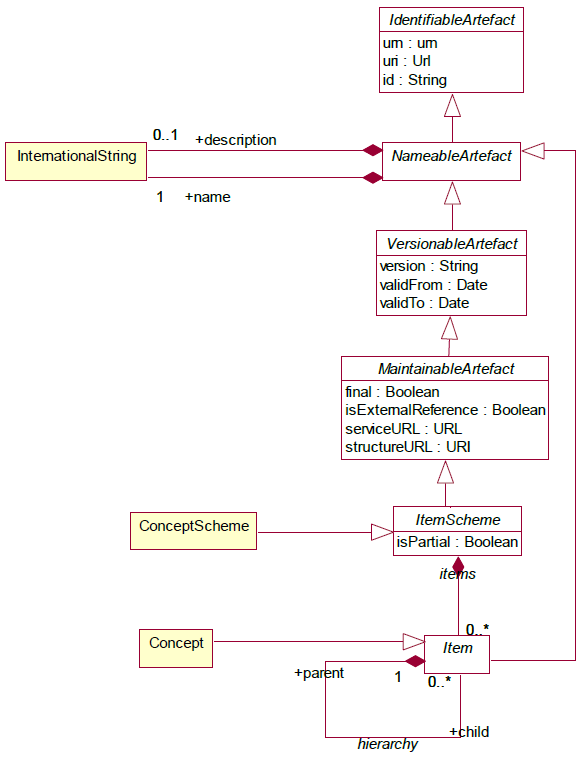
Figure 16 Class diagram of the Concept Scheme
4.4.2 Explanation of the Diagram
The ConceptScheme inherits from the ItemScheme and therefore has the following attributes:
- id
- uri
- urn
- version
- validFrom
- validTo
- isExternalReference
- registryURL
- structureURL
- repositoryURL
- final
- isPartial
Concept inherits from Item and has the following attributes:
- id
- uri
- urn
Through the inheritance from NameableArtefact both ConceptScheme and Concept have the association to InternationalString to support a multi-lingual name, an optional multi-lingual description, and an association to Annotation to support notes (not shown).
Through the inheritance from ItemScheme the ConceptScheme comprise one or more Concepts, and the Concept itself can have one or more child Concepts in the (inherited) hierarchy association. Note that a child Concept can have only one parent Concept in this association.
A partial ConceptScheme (where isPartial is set to “true”) is identical to a ConceptScheme and contains the Concept and associated names and descriptions, just as in a normal ConceptScheme. However, its content is a sub set of the full ConceptScheme.
The way this works is described in section 3.5.3.1 on ItemScheme.
4.4.3 Class Diagram - Relationship
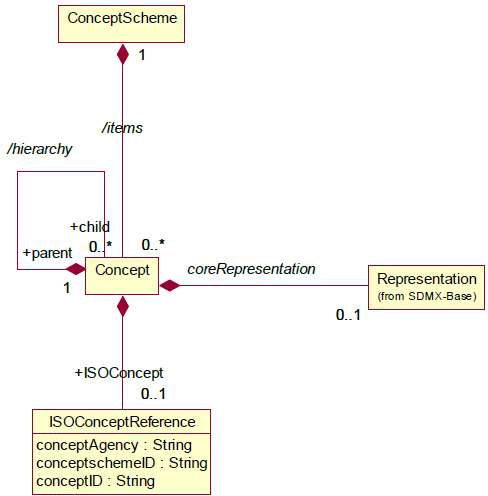
Figure 17: Relationship class diagram of the Concept Scheme
4.4.4 Explanation of the diagram
4.4.4.1 Narrative
The ConceptScheme can have one or more Concepts. A Concept can have zero or more child Concepts, thus supporting a hierarchy of Concepts. Note that a child Concept can have only one parent Concept in this association. The purpose of the hierarchy is to relate concepts that have a semantic relationship: for example a Reporting_Country and Vis_a_Vis_Country may both have Country as a parent concept, or a CONTACT may have a PRIMARY_CONTACT as a child concept. It is not the purpose of such schemes to define reporting structures: these reporting structures are defined in the MetadataStructureDefinition.
The Concept can be associated with a coreRepresentation. The coreRepresentation isthe specification of the format and value domain of the Concept when used on a structure like a DataStructureDefinition or a MetadataStructureDefinition, unless the specification of the Representation is overridden in the relevant structure definition. In a hierarchical ConceptScheme the Representation is inherited from the parent Concept unless overridden at the level of the child Concept.
Note that the ConceptScheme is used as the Representation of the MeasureDimension in a DataStructureDefinition (see 5.3.2). Each Concept in this ConceptScheme is a specific measure, each of which can be given a coreRepresentation. Thus the valid format of the observation for each measure when reported in a data set for the MeasureDimension is specified in the Concept. This allows a different format for each measure. This is covered in more detail in 5.3.
The Representation is documented in more detail in the section on the SDMX Base.
The Concept may be related to a concept described in terms of the ISO/IEC 11179 standard. The ISOConceptReference identifies this concept and concept scheme in which it is contained.
4.4.4.2 Definitions
Class Feature Description ConceptScheme Inherits from
ItemScheme
The descriptive information for an arrangement or division of concept into groups based on characteristics, which the objects have in common. Concept Inherits from
Item
A concept is a unit of knowledge created by a unique combination of characteristics. /hierarchy Associates the parent and the child concept. coreRepresentation Associates a Representation. +ISOConcept Association to an ISO concept reference. ISOConceptReference The identity of an ISO concept definition. conceptAgency The maintenance agency of the concept scheme containing the concept. conceptSchemeID The identifier of the concept scheme. conceptID The identifier of the concept. 4.5 Category Scheme
4.5.1 Context
This package defines the structure that supports the definition of and relationships between categories in a category scheme. It is similar to the package for concept scheme. An example of a category scheme is one which categorises data – sometimes known as a subject matter domain scheme or a data category scheme. Importantly, as will be seen later, the individual nodes in the scheme (the “categories”) can be associated to any set of IdentiableArtefacts in a Categorisation.
4.5.2 Class diagram - Inheritance
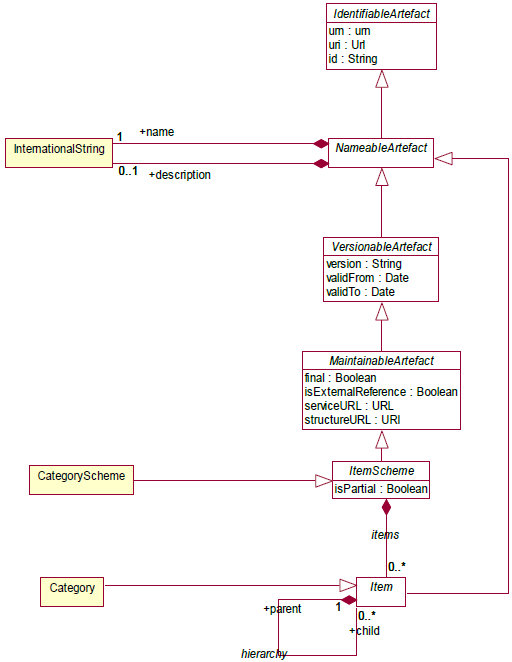
Figure 18 Inheritance Class diagram of the Category Scheme
4.5.3 Explanation of the Diagram
4.5.3.1 Narrative
The categories are modelled as a hierarchical ItemScheme. The CategoryScheme inherits from the ItemScheme and has the following attributes:
- id
- uri
- urn
- version
- validFrom
- validTo
- isExternalReference
- structureURL
- serviceURL
- final
- isPartial
Category inherits from Item and has the following attributes:
- id
- uri
- urn
Both CategoryScheme and Category have the association to InternationalString to support a multi-lingual name, an optional multi-lingual description, and an association to Annotation to support notes (not shown on the model).
Through the inheritance the CategoryScheme comprise one or more Categorys, and the Category itself can have one or more child Category in the (inherited) hierarchy association. Note that a child Category can have only one parent Category in this association.
A partial CategoryScheme (where isPartial is set to “true”) is identical to a CategoryScheme and contains the Category and associated names and descriptions, just as in a normal CategoryScheme. However, its content is a sub set of the full CategoryScheme. The way this works is described in section 3.5.3.1 on ItemScheme.
4.5.4 Class diagram - Relationship
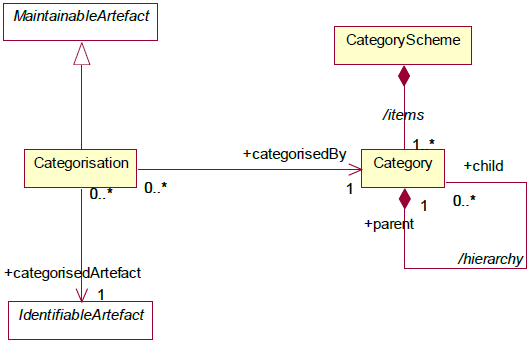
Figure 19: Relationship Class diagram of the Category Scheme
The CategoryScheme can have one or more Categorys. The Category is Identifiable and has identity information. A Category can have zero or more child Categorys, thus supporting a hierarchy of Categorys. Any IdentifiableArtefact can be +categorisedBy a Category. This is achieved by means of a Categorisation. Each Categorisation can associate one IdentifiableArtefact with one Category. Multiple Categorisations can be used to build a set of IdentifiableArtefacts that are +categorisedBy the same Category. Note that there is no navigation (i.e. no embedded reference) to the Categorisation from the Category. From an implementation perspective this is necessary as Categorisation has no affect on the versioning of either the Category or the IdentifiableArtefact.
4.5.4.1 Definitions
Class Feature Description CategoryScheme Inherits from
ItemSchemeThe descriptive information for an arrangement or division of categories into groups based on characteristics, which the objects have in common. /items Associates the categories. Category Inherits from
ItemAn item at any level within a classification, typically tabulation categories, sections, subsections, divisions, subdivisions, groups, subgroups, classes and subclasses. /hierarchy Associates the parent and the child Category. Categorisation Inherits from
MaintainableArtefactAssociates anIdentifableArtefact with a Category. +categorisedArtefact Associates the IdentifableArtefact. +categorisedBy Associates the Category. 4.6 Organisation Scheme
4.6.1 Class Diagram

Figure 20 The Organisation Scheme class diagram
4.6.2 Explanation of the Diagram
4.6.2.1 Narrative
The OrganisationScheme is abstract. It contains Organisation which is also abstract. The Organisation can have child Organisation.
The OrganisationScheme can be one of four types:
- AgencyScheme – contains Agency which is restricted to a flat list of agencies (i.e. there is no hierarchy). Note that the SDMX system of (Maintenance) Agency can be hierarchic and this is explained in more detail in the separate document “Technical Notes”.
- DataProviderScheme – contains DataProvider which is restricted to a flat list of agencies (i.e. there is no hierarchy).
- DataConsumerScheme – contains DataConsumer which is restricted to a flat list of agencies (i.e. there is no hierarchy).
- OrganisationUnitScheme – contains OrganisationUnit which does inherit the /hierarchy association from Organisation.
Reference metadata can be attached to the Organisation by means of the metadata attachment mechanism. This mechanism is explained in the Reference Metadata section of this document (see section 7). This means that the model does not specify the specific reference metadata that can be attached to a DataProvider, DataConsumer,OrganisationUnit or Agency, except for limited Contact information.
A partial OrganisationScheme (where isPartial is set to “true”) is identical to a OrganisationScheme and contains the Organisation and associated names and descriptions, just as in a normal OrganisationScheme However, its content is a sub set of the full OrganisationScheme. The way this works is described in section 3.5.3.1 on ItemScheme.
4.6.2.2 Definitions
Class Feature Description OrganisationScheme Abstract Class Inherits from
ItemScheme
Sub classes are:
AgencyScheme
DataProviderScheme
DataConsumerScheme
OrganisationUnitSchemeA maintained collection of Organisations. /items Association to the Organisations in the scheme. Organisation Inherits from
Item
Sub classes are:
Agency
DataProvider
DataConsumer
OrganisationUnitAn organisation is a unique framework of authority within which a person or persons act, or are designated to act, towards some purpose. +contact Association to the Contact information. /hierarchy Association to child Organisations. Contact An instance of a role of an individual or an organization (or organization part or organization person) to whom an information item(s), a material object(s) and/or person(s) can be sent to or from in a specified context. name The designation of the Contact person by a linguistic expression. organisationUnit The designation of the organisational structure by a linguistic expression, within which Contact person works. responsibility The function of the contact person with respect to the organisation role for which this person is the Contact. telephone The telephone number of the Contact. fax The fax number of the Contact. email The Internet e-mail address of the Contact. X400 The X400 address of the Contact. uri The URL address of the Contact. AgencyScheme A maintained collection of Maintenace Agencies. /items Association to the Maintenance Agency in the scheme. DataProviderScheme A maintained collection of Data Providers. /items Association to the Data Providers in the scheme. DataConsumerScheme A maintained collection of Data Consumers. /items Association to the Data Consumers in the scheme. OrganisationUnitScheme A maintained collection of Organisation Units. /items Association to the Organisation Units in the scheme. Agency Inherits from
OrganisationResponsible agency for maintaining artefacts such as statistical classifications, glossaries, structural metadata such as Data and Metadata Structure Definitions, Concepts and Code lists. DataProvider Inherits from
OrganisationAn organisation that produces data or reference metadata. DataConsumer Inherits from
OrganisationAn organisation using data as input for further processing. OrganisationUnit Inherits from
OrganisationA designation in the organisational structure. /hierarchy Association to child Organisation Units 4.7 Reporting Taxonomy
4.7.1 Class Diagram
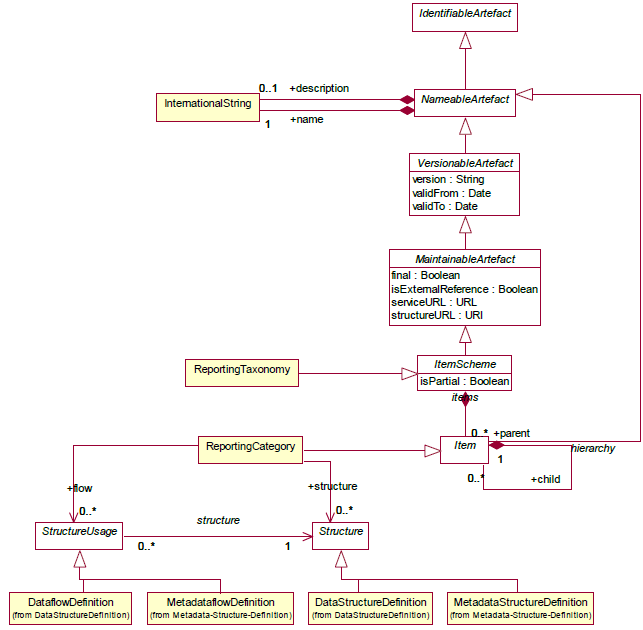
Figure 21: Class diagram of the Reporting Taxonomy
4.7.2 Explanation of the Diagram
4.7.2.1 Narrative
In some data reporting environments, and in particular those in primary reporting, a report may comprise a variety of heterogeneous data, each described by a different Structure. Equally, a specific disseminated or published report may also comprise a variety of heterogeneous data. The definition of the set of linked sub reports is supported by the ReportingTaxonomy.
The ReportingTaxonomy is a specialised form of ItemScheme. Each ReportingCategory of the ReportingTaxonomy can link to one or more StructureUsage which itself can be one of DataflowDefinition, or MetadataflowDefinition, and one or more Structure, which itself can be one of DataStructureDefinition or MetadataStructureDefinition. It is expected that within a specific ReportingTaxonomy each Category that is linked in this way will be linked to the same class (e.g. all Category in the scheme will link to a DataflowDefinition). Note that a ReportingCategory can have child ReportingCategory and in this way it is possible to define a hierarchical ReportingTaxonomy. It is possible in this taxonomy that some ReportingCategory are defined just to give a reporting structure. For instance:
Section 1
- linked to DatafowDefinition_1
- linked to DatafowDefinition_2
Section 2
- linked toDatafowDefinition_3
- linked to DatafowDefinition_4
Here, the nodes of Section 1 and Section 2 would not be linked to DataflowDefinition but the other would be linked to a DataflowDefinition (and hence the DataStructureDefinition).
A partial ReportingTaxonomy (where isPartial is set to “true”) is identical to a ReportingTaxonomy and contains the ReportingCategory and associated names and descriptions, just as in a normal ReportingTaxonomy However, its content is a sub set of the full ReportingTaxonomy The way this works is described in section 3.5.3.1 on ItemScheme.
4.7.2.2 Definitions
Class Feature Description ReportingTaxonomy Inherits from
ItemSchemeA scheme which defines the composition structure of a data report where each component can be described by an independent Dataflow Definition or Metdataflow Definition. items Associates the Reporting Category ReportingCategory Inherits from
ItemA component that gives structure to the report and links to data and metadata. hierarchy Associates child Reporting Category. +flow Association to the data and metadata flows that link to metadata about the provisioning and related data and metadata sets, and the structures that define them. +structure Association to the Data Structure Definition and Metadata Structure Definitions which define the structural metadata describing the data and metadata that are contained at this part of the report.